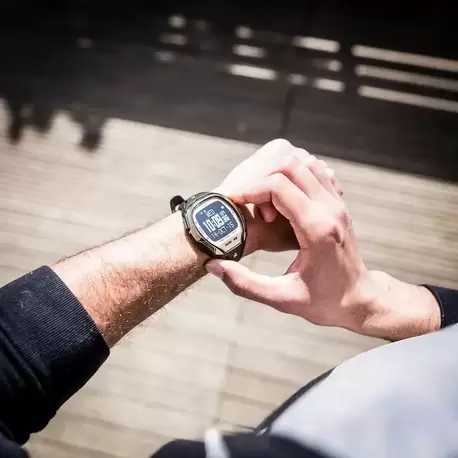Dr. Allen LimSkratch Labs Founder & Sports Physiologist  When preparing to do your best in a competitive event or training, it goes without saying that proper food and drink is a critical piece of the puzzle. But, as much of an emphasis as athletes put on what to eat and drink, I often see them making even bigger mistakes with when they consume their food and hydration. Those mistakes can manifest in a host of negative consequences that range the gamut from up-chucking a pre-workout meal to simply not having the energy to maximize a workout. To help prevent this mistiming woe, below are a handful of guidelines gleaned from years of well-timed and not so well-timed experiences that highlight some important tips about how to time your nutrition before, during, and after your next workout or race. Of course, everyone is different and what may work for some, may not work for you. So as always, it’s imperative that you treat yourself as your own experiment and learn what works best for you. After all, timing is everything! Pre-Workout 1) Eat and Drink 3 Hours Before. For longer workouts lasting more than 2 to 3 hours, it’s really important that you eat a substantial meal that makes you full and satiated at least 3 hours before the start of the workout and to drink enough water to quench any sense of thirst. Doing so will ensure that your food is completely digested and absorbed, that you’ve got plenty of time to drop the proverbial “kids” off at the “pool,” that you’re adequately hydrated, and that your blood sugar will be steady. This last point is really important. Eating a meal causes your blood sugar to rise. This, in turn, causes the hormone insulin to be released about 60 to 90 minutes later, which causes that sugar to be moved into muscle and fat cells. If you start exercising 60 to 90 minutes after you eat a large meal, you’ll be starting that exercise right as insulin is peaking. Since a contracting muscle can move sugar into the muscle without insulin, the combination of insulin and exercise can cause blood sugar to dip making you feel like total crud. So give yourself ample time to digest, hydrate, visit the throne, and steady your blood sugar before your big workouts or events. 2) Eat and Drink Right When You Start. Sometimes it’s not possible to eat an ample meal 3 hours before your workout. If that’s the case and you’re worried about not having enough energy for a hard workout, start eating and drinking right when you start the workout. What’s unique about exercise is that unless you’re at a very low exercise intensity, insulin is not normally released when we are exercising since working muscles can uptake sugar without the need for insulin. This means that if you start eating right when you start exercising you won’t experience the crash that is common if you eat too much an hour or so before a workout. You’ll often see athletes right at the start line shoving simple sugars down just before the gun goes off to give them a little boost. Beyond food, another common technique for many athletes is to drink a high to very high sodium solution like Skratch Labs' Wellness Hydration Mix (1500 mg sodium per liter) or Hyper-Hydration Mix (3500 mg sodium per liter) right before very hard and long workouts in moderate to high heat, when getting adequate hydration might be a problem. By drinking a high sodium solution, right before exercising in the heat, the drop in blood pressure and extra space created by expanding blood vessels that are dilating to bring hot blood to the skin to keep you cool, can be offset. But, be careful. Drinking too much at the onset of exercise if it’s cool or when the exercise intensity is low will likely just make you need to pee 20-30 minutes into your workout. 3) Just Get Up and Go. In some cases, if the workout isn’t too hard or long, you can just get up and go, especially in the morning when you’ve just gotten up. The unique thing about sleep is that it’s essentially an overnight fast that re-adjusts the body’s hormonal and metabolic environment, keeping blood sugar steady despite a lack of food. You can take advantage of this in the morning by simply getting up and starting your workout, then having breakfast afterward. This works especially well for lower intensity aerobic workouts where your primary fuel source is fat. So if it’s early, the intensity or duration isn’t that great, and you’ve gotten plenty of sleep, just get up and go. During Workout When in the middle of a workout the amount of food, water, and salt you’ll need will depend on a host of variables including your fitness level, the exercise intensity, the duration, and the environment. Given all the possibilities here, I tend to find that listening to one’s body and bringing ample supplies to allow one to improvise often works better than creating a rigid timetable that may or may not meet a dynamic environment. With that in mind here are some big picture ideas to keep in mind: 1) Hydrate First, Fuel Second. There’s a philosophical problem called Buridan’s Ass, where a donkey, equally as thirsty as it is hungry finds itself exactly equidistant from a barrel of hay and a barrel of water. Given that the donkey wants water just as bad as it wants food and given that it is exactly the same distance away from both, what does the donkey do? Some philosophers believe that the donkey will die because it’s unable to make a decision. Others believe that the donkey’s free-will has nothing to do with the problem and that some external circumstance like a butterfly flapping its wings will move the donkey either towards the water or hay. From a physiological perspective, philosophy doesn’t matter. In most situations, the donkey needs to drink first then fuel. This is especially true during exercise that causes one to sweat a lot. When it’s warm or hot and the intensity is high, the fluid and sodium we lose through our sweat is more likely to negatively impact our performance before depleted fuel stores do. Moreover, a low carbohydrate solution (4 grams of carbohydrate per 100 ml of water) with ample sodium (700-800 mg of sodium per liter) can actually hydrate better than water alone while also providing some fuel. This is because the active transport of sugar and sodium helps to expedite water movement across the small intestine into the body. Thus, when it’s really hot and sweat rates are high, focusing on hydrating with a low carbohydrate solution can provide more than enough energy since the volume of drink needed is also high. With that in mind, there are very few instances, if any, where drinking water alone is better than using a low carbohydrate drink mix with ample sodium. Generally speaking, replacing at least half the calories you burn per hour and keeping your hydration loss under 3-4% of body weight will keep you adequately hydrated and fueled for most workouts lasting anywhere from 2 to 8 hours. 2) Drink When Thirsty. I often hear people say that if you start drinking when you’re thirsty, it’s already too late and that you’ll be too dehydrated to fix it. But, that hasn’t been my experience with elite athletes competing in extreme environments. If anything, if someone drinks beyond their thirst, they run the risk of diluting their blood’s sodium concentration - a phenomena called hyponatremia that can lead to a host of problems and even death in extreme cases. Thirst actually works to try and help control one’s blood sodium level. In fact, one of the important cues for thirst is an increase in blood sodium concentration. As we sweat and lose more water than salt in that sweat, blood sodium concentration increases which makes us thirsty. If we drink plain water, we don’t need to drink as much water as we’ve lost because we lose an appreciable amount of sodium in our sweat (600 to 1500 mg of sodium per liter of sweat). This means that with plain water, we stop being thirsty before we’ve replaced all the water we’ve lost. Said differently, thirst controls sodium balance, not water balance. And this feature of thirst is actually a good thing because even though losing water can be bad for our exercise performance, screwing up our blood’s sodium balance can be bad for life. The easy solution is to replace both the water and sodium that you lose in your sweat. This allows thirst to be a better trigger for maintaining both water and sodium balance. Still, listening to one’s sense of thirst is an important way to time your fluid intake regardless of the type of drink you’re using because keeping one’s sodium balance in check takes priority over water balance. That said, if you weigh yourself before and after exercise to get a sense of your water loss and you are constantly finding that you’re more than 3 to 4% dehydrated and/or you find yourself more dehydrated than your peers and suffering because of it, consider that water volume by itself may not be the problem. If you’re drinking to thirst, you may not be getting enough sodium. Get enough of it and the timing tends to work itself out on it’s own if you listen to your body. 3) Don’t Be Afraid to Eat Real & Solid Food. A lot of the available pre-packaged sports nutrition designed for exercise is deconstructed into some liquid or gel form. I think that the idea is that since athletes need energy quickly when on the go, companies make highly concentrated liquids and gels that are effectively pre-digested so that they empty really quickly from the stomach. But, just because something empties from the stomach really fast, doesn’t mean that it ends up getting absorbed really fast into the body by the small intestine, which sits below the stomach and which is responsible for actually transporting nutrients into the body. On the contrary, most gastrointestinal distress occurs when the rate that digested food empties from the stomach is greater than the rate of intestinal absorption. It’s a classic traffic jam. Put too many cars on a freeway in one spot too fast and you’ve got a cluster. And unfortunately, when there’s a traffic jam in the small intestine the result is a lot of bloating, discomfort, and in some cases an evacuation down the bowels and out the far end of our gastrointestinal solar system - a place that coincidently rhymes with the planet Uranus. The stomach, however, is actually a really decent reservoir for food that slowly churns and digests food then paces that digested food into the small intestine where it can then be absorbed into the body at a consistent and constant pace. But, this function only works if you give the stomach real food or externally pace the entrance of highly concentrated liquid fuels by taking in prescribed amounts on a rigid schedule. While consuming small portions of 10-20 grams of carbohydrate every 15 minutes is certainly a strategy that can work to keep one fueled during exercise, in dynamic race environments, it’s sometimes hard to stick to a very specific interval of food intake. In these situations, don’t be afraid to eat real and solid food and use your stomach as a reservoir that slowly and surely drips calories into your small intestine and body for you. Post-Workout There’s only one piece of critical advice for timing your post-workout refueling and rehydration. And that is to eat and drink as soon as you can post exercise. Here are thoughts to help make that happen: 1) Plan Ahead. This certainly isn’t the easiest or most convenient thing to do, but planning ahead and pre-cooking meals that can easily be reheated to eat immediately after you finish your workout is what I personally prefer. Why? Because, it generally means I’m eating something that tastes better, is more nutritious, and a better value. But, even if planning ahead means you’re going to the sandwich shop down the street, the bottom line is that you want to satiate your hunger and your thirst as soon as you finish your workout. The reason for this is that immediately after exercise, tired muscles are really sensitive to insulin. This means that as insulin is released when you eat, the energy from the food you eat gets preferentially delivered to the muscles that need it the most rather than spreading throughout the body to fat cells or muscles that weren’t active during exercise. The net result is that recovery is improved because one is effectively refueling in a more targeted and faster manner. 2) Use a Recovery Drink if You’re in a Bind. While, there’s nothing like a freshly cooked meal to fast track recovery, if you’re in the middle of nowhere a good recovery drink with about 4 or 5 grams of carbohydrate to 1 gram of protein at about 300-400 Calories with 300-400 mg of sodium per 16 oz serving is a great way to refuel and rehydrate before a more ample meal can be eaten. 3) Time your Workouts to Finish before Breakfast, Lunch or Dinner. There’s something about being an athlete and still functioning in normal society that is sometimes easier said than done. With that in mind and in thinking big picture about proper food timing, sometimes the easiest way to make everything fit is to start with when one trains. Plan your training to finish before breakfast, lunch, or dinner and few will notice that you're living in two worlds (just don’t forget to shower before). It’s important to note that if you’re not an elite endurance athlete looking for a peak performance, the principles discussed also apply to any physical active person who is looking to feel their best when working out. What’s different is the amount or scale. It’s the same music, just at a lower volume. Giving yourself ample time to digest, thinking ahead, and listening to one’s sense of thirst and hunger are same. In fact, for someone just looking to stay healthy and lose a little weight, timing of food around activity is a great way to structure one’s daily meals and meet one’s goals, since using food as fuel or to refuel creates a more natural relationship with the food we eat. Our bodies are designed for physical activity, so use food to be active. For a culture driven by breakfast, lunch, and dinner, a simple tip is to plan your workouts to end before breakfast, lunch, or dinner, so that you’re refueling a depleted tank and revved metabolism. Finally, scale up your calories around your workouts and scale down when you’re not working out. Ultimately, no matter what the intensity or duration of exercise, thinking about how we time food in the context of activity is key to a fitter and healthier life. For a more detailed review of what and when to eat to optimize your active lifestyle, check out Feed Zone Portables for delicious and easy recipes as well as a plethora of food for thought. Comments are closed.
|
©
Pikes Peak Marathon

